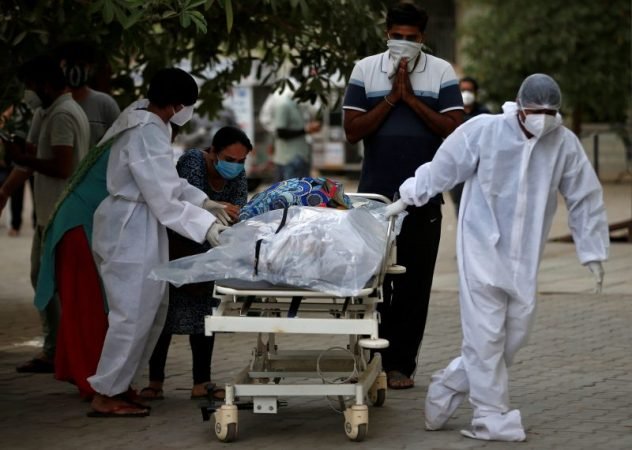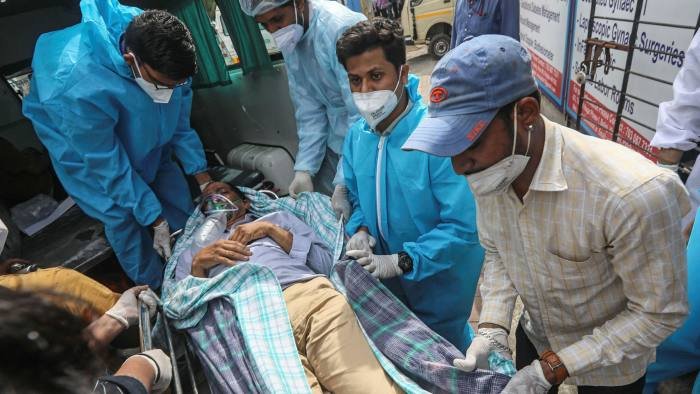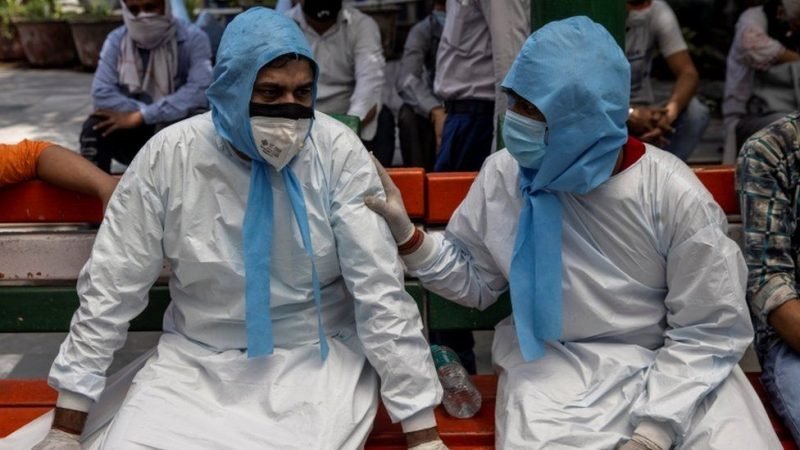Can India Avoid the High Mortality Rates in a Possible Third Wave of COVID-19?

With over four lakh people officially dead, for Indians the ferocity of the second wave of COVID-19 has been nothing short of a calamitous. Provisionally to circumvent high mortality in the event of a third wave of COVID, the government must take some immediate steps that involve the fast-track augmentation of healthcare personnel, creation of temporary hospitals, preparations for arranging Intensive Care Unit (ICU) Beds for Children.
Close on the heels of catastrophic second wave of coronavirus which was marked by the predominance of the Delta variant of Coronavirus Disease 2019 (COVID-19), the related variant Delta plus aka AY.1 has been has been detected in around 40 samples from six districts in three states – Maharashtra, Kerala and Madhya Pradesh.This strain of COVID-19 apparently spreads more easily, binds more easily to lung cells and is potentially resistant to monoclonal antibody therapy, a potent intravenous infusion of antibodies to neutralise the virus. ‘COVID-19: The race to finishing line’ a report prepared by SBI Research, India may witness the third COVID wave in mid-August 2021. Its previous research had predicted that the second wave of infections in India may peak in the third week of May, which proved accurate. With only 4.6 per cent of the population fully vaccinated and 20.8 per cent having received one dose, will India be able to evade another wave of the high mortality rates?
For Indians the ferocity of second wave of COVID-19 has been nothing short of a calamitous. With over four lakh official COVID-19 related deaths, India accounted for 25% of global deaths. But there is sufficient evidence to suggest that the actual death toll is far higher than officially reported. The result of data lags, missed cases, and incomplete reporting, the exact toll of the pandemic in India is unknown. This massive mortality rate is largely due to the lack of access to quality healthcare by severely ill patients. In a country where intensive care services and resources are scarce and unevenly distributed the scale of coronavirus has overwhelmed the healthcare system.

In order avoid devastations in future medical emergencies the overall medical infrastructure needs upgradation. However, provisionally to circumvent high mortality in the event of a third wave of COVID, the government must take some immediate steps that involve the fast-track augmentation of healthcare personnel, creation of temporary hospitals, preparations for arranging Intensive Care Unit (ICU) Beds for Children, streamlining the distribution system for medicines and equipment and the regulation of a Standard Treatment Protocol.
Workforce of Young Doctors and Nurses:
From all over India, about 2.2 lakh nurses have already completed their three-year GNM (General Nursing and Midwifery) or 04-year B.Sc. and are preparing for exams. Dr Shetty, the chairman and founder of Narayana Health, a chain of 21 medical centres in India, in an online address recently suggested that the Ministry of Health, along with the Indian Nursing Council, should consider these students as graduates and deploy them to work in COVID ICU wards for one year, after which they will be given graduation certificates. He further suggested that the roughly 25000 doctors who have completed their PG, but have not appeared for examination yet, could be drafted for work at COVID ICU for the next year. About 1.9 lakh doctors have graduated from overseas universities, but have not cleared the NEET. Those who willing to volunteer one year of dedicated work at COVID-19 ICU’s should be offered permanent registration. About 1.3 lakh (to be) doctors have completed their training and studies are preparing for final PG exams. The NEET exam should be conducted online at the earliest and results of the 35,000 PG seats declared at priority. This leaves about a lakh young doctors that would not qualify for PG. They could be offered grace marks for the next year PG selection, if they complete one year practice at a COVID ICU.
Vaccination Drive must not slacken:
Vaccination is the most rational way to prevent COVID-19 Delta variant infection. The Centre has said that that it will target 1 crore daily COVID jabs from July-August. That figure seems hard to achieve at the present rate. 45 lakh people were vaccinated on July 6, which is lower in comparison with the first week of the new vaccination drive that saw around 60 lakh jabs each day. There was a surge in the vaccination rate from June 21 onwards, after the PM Modi announced that the central government would take control of procurement of doses and vaccines will be provided free of cost to all adults at government facilities. On the first day of the drive June 21, a record 90 lakh doses were administered. Notwithstanding the target of one crore per date, even if an average of 50 lakh doses a day is sustained, India will only be able to cover 66% of our population. Current vaccine production is at 60 to 70 million doses per month, at this rate it will take two years for India to be vaccinated. In order to cover all adults by December 29, this figure of daily vaccination rate must be increased to 87 lakhs. Therefore, there is need to increase production and simultaneously increase vaccine purchase and the reduction in vaccine wastage.

Creation of Temporary Hospitals:
Many COVID care centers are winding up following decrease in cases. The temporary hospitals should not be dismantled immediately after the second wave is over. It was noticed that temporary hospitals built during first wave was dismantled and it took lot of time to restart during the second wave. Therefore, at least basic structure should be maintained for at least for one year. Further buildings, installations and lands available especially with defense forces, paramilitary forces, PSUs, community centers, stadiums etc., must be identified for conversion into temporary COVID care centers. Expertise of institutions like Defence Research and Development Organisation (DRDO), medical wing of defense forces, railways could be used in setting up temporary hospitals. Ministry of Health and Family Welfare or National Institute of Disaster Management (NIDM) of should be identified as nodal agency to prepare a plan and coordinate the entire things from setting up hospitals to running the hospital.
ICU Beds for Children:
Preparations should be made to avoid unfortunate possibility of children being affected in third wave. Mostly current ICU beds available are for adults. Arrangements should be made for specially designed ICU beds in terms of size of equipment, beds etc for children. Children of age group 0-12 have different requirements. They would need support of their parents. Hence, arrangements in ICU would be required for attendants.
Distribution System for Medicines and Equipment:
In order to prevent the black marketing of medicines and equipment a plan and system needs to be prepared for distribution of the same. Medicine banks city and district level should be set up with a committee of doctors. All medical requirements could be submitted to this committee, which could facilitate procurement of medicines and provide them directly to the patients/hospitals.
It is hoped that nation does not have to witness another wave COVID-19 wave. But it must be prepared to evade the horror of hospitals running out of beds and oxygen, of overfull morgues and crammed crematoriums. India’s COVID death figure serves as a stark realisation that this nation of 1.4 billion is unacceptably ‘wanting’ with shortages of medical infrastructure, logistics, resources and trained human resource.


















